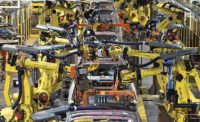For decades, many people have fantasized about flying cars and roadworthy aircraft. While several successful prototypes have been built in the past, the idea has never gotten off the ground. But, that may finally be about to change.
In the past few months, flying car technology has attracted widespread attention. Articles have appeared in a number of credible publications, including The Economist, The New York Times and USA Today.
Engineers in China, France, Germany, Holland, Israel, Japan, Slovakia, the United States and elsewhere are currently working on a variety of cutting-edge designs that show potential.
Even big-name players from both the automotive and aerospace sectors, such as Airbus and Toyota, are pouring money into R&D efforts. In fact, Toyota hopes to deploy a fleet of vehicles in time for the 2020 Olympics in Tokyo.
Despite considerable concern about liability and safety, two-thirds of Americans say they would like to ride in or operate their own airborne vehicle. A recent study conducted by the University of Michigan Transportation Research Institute (UMTRI) claims that 41 percent of respondents are “very interested” in riding in a flying car.
“Until recently, flying cars have existed primarily in the realm of science fiction, although patents for such vehicles extend to the early years of aviation,” says Michael Sivak, a research professor at UMTRI. “However, there has been a rapid increase in interest in flying cars from companies ranging from large, international manufacturers to a variety of startups.
“Major technological, traffic-control and licensing issues still need to be addressed,” warns Sivak. “A big unknown is what consumers think of the concept of flying cars, and what the desirable parameters are for such a novel approach to mobility.”
Sivak and his colleagues discovered that more than 60 percent of respondents are “very concerned” with the overall safety of flying cars, and with their performance in congested airspace and poor weather.
“Despite these concerns, most Americans would still ultimately like to use flying cars,” says Sivak. “About three-fourths of the respondents cited shorter travel time as the main reason, while less than 10 percent said fewer crashes, better fuel economy or lower emissions were the most likely benefits of [the vehicles].”
While numerous hurdles remain, one of the biggest debates is over which type of design will win out. Some folks believe cars should sprout wings, while others think a brand new type of aircraft is the way to go.
Engineers at companies such as AeroMobil, Carplane and Terrafugia are developing flying cars that feature foldable wings and rear-mounted pusher props. Meanwhile, engineers at startups such as Cartivator, Lilium and Urban Aeronautics are focusing on alternative designs that rely on electric jet engines, lift fans or tilt rotors for vertical takeoff and landing (VTOL).
However, building a practical flying car is easier said than done. It’s extremely difficult to create a car that can fly or a plane that can drive on public roads.
“Most designs end up being either inefficient cars or inefficient airplanes,” says Hans Weber, president of TECOP International Inc., an aerospace consulting firm. “Weight and handling issues are huge challenges confronting engineers. But, designs with electric propulsion systems that enable VTOL appear to hold the most promise.”
According to Weber, it will be at least several more years before viable flying cars exist. When they do hit the market, he believes manufacturers will adapt more production processes from the aerospace industry than the automotive sector.
“In order to fly, all components and materials will have to be certified by the FAA,” explains Weber. “So, assembly lines will probably closely resemble what’s typically found in aircraft factories.”










